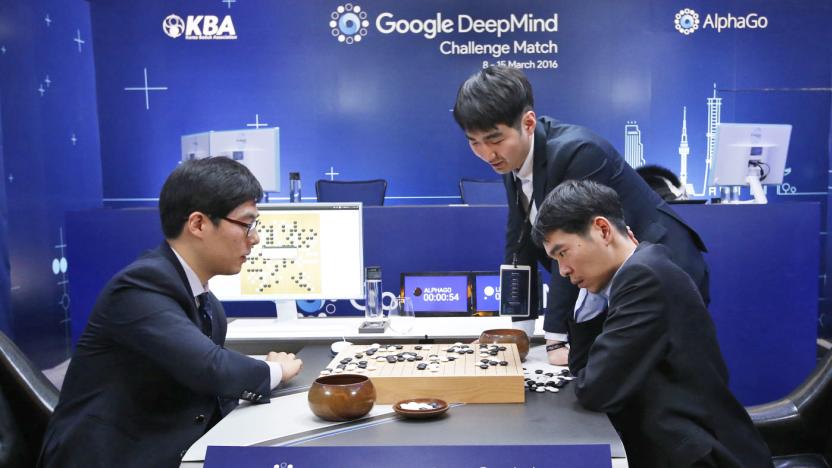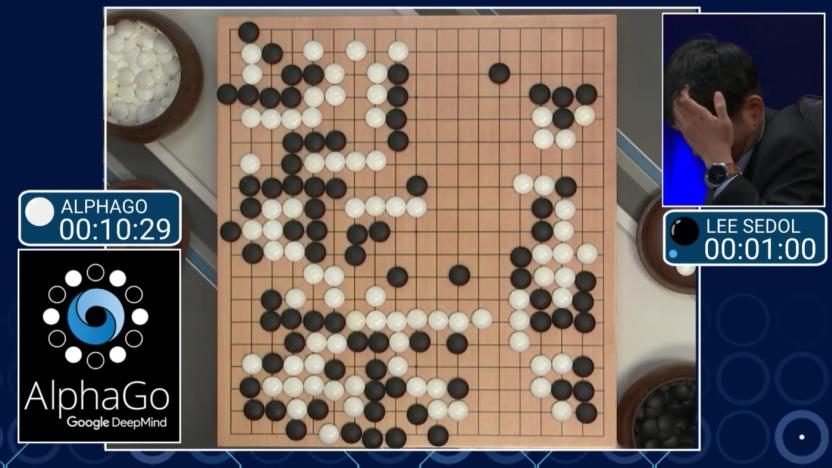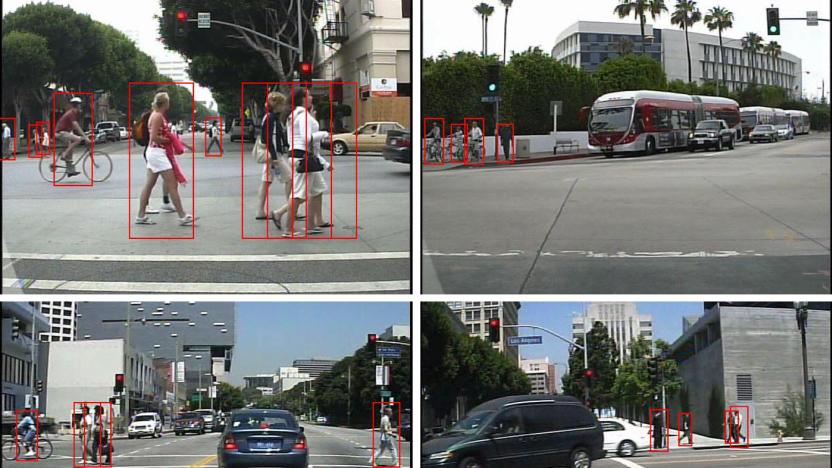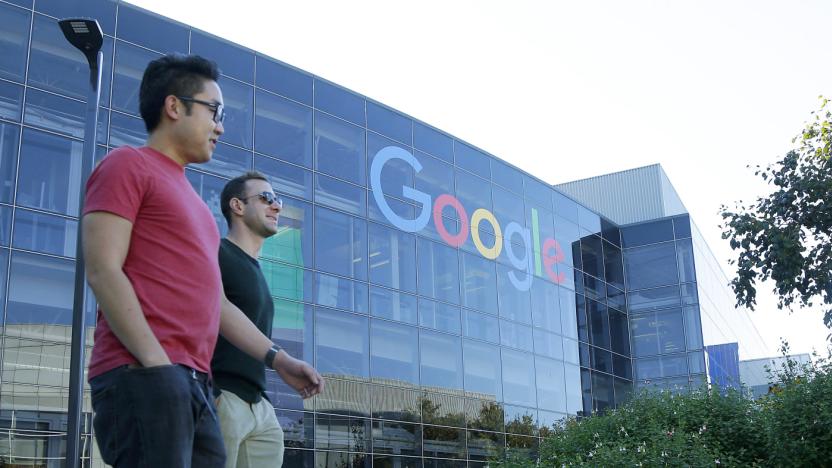MachineLearning
Latest

Microsoft wants you to train AI with 'Minecraft'
AI has mastered the complex game Go, and if you're willing to teach the machines to beat you at Minecraft, too, Microsoft wants your help. Researchers from Project AIX want to use the open-world game to improve its artificial intelligence systems. Unlike Go, which is very rule-specific, Minecraft requires what researchers call "general intelligence," a formidable challenge for deep learning systems. "Minecraft is the perfect platform for this kind of research because it's this very open world," says Katja Hofmann from Microsoft's Cambridge labs.

Google AI finally loses to Go world champion
At last, humanity is on the scoreboard. After three consecutive losses, Go world champion Lee Sedol has beaten Google's DeepMind artificial intelligence program, AlphaGo, in the fourth game of their five-game series. DeepMind founder Demis Hassabis notes that the AI lost thanks to its delayed reaction to a slip-up: it slipped on the 79th turn, but didn't realize the extent of its mistake (and thus adapt its playing style) until the 87th move. The human win won't change the results of the challenge -- Google is donating the $1 million prize to charity rather than handing it to Lee. Still, it's a symbolic victory in a competition that some had expected AlphaGo to completely dominate.

Watch AlphaGo vs. Lee Sedol (update: AlphaGo won)
Human Go player Lee Sedol is currently down 0-2 in a five game series against the AlphaGo program, which is powered by Google's DeepMind AI. The third match is currently under way at the Four Seasons hotel in Seoul, and like the others, you can watch a live stream (with commentary explaining things for us you Go novices) on YouTube. If there's any chance for humanity to pull out an overall victory then Sedol will need to make a move tonight, tune in and see how close we are to facing retribution for our crimes against robots.

Google is using neural networks to improve Translate
Google has got a pretty good handle on AI, judging by its shocking back-to-back wins against a 9-dan champ Lee Sedol in the intricate strategy game Go. Though the company is using it in Google Photos, Gmail and other apps, it may soon bring deep learning to one that really needs it: Google Translate. Anybody who uses that app regularly knows that its translations are flaky, at best, especially for languages that are vastly different from English, like Sedol's native Korean.

Google's Deepmind AI beats Go world champion in first match
Google's Deepmind artificial intelligence has done what many thought it couldn't: beat a grandmaster at the ancient Chinese strategy game Go. The "AlphaGo" program forced its opponent, 33-year-old 9-dan professional Lee Sedol, to resign three and a half hours into the first of their five-match battle. While Deepmind has defeated a Go champion before, it's the first time a machine has beaten a world champion.

Smart car algorithm sees pedestrians as well as you can
It's one thing for computers to spot people in relatively tame academic situations, but it's another when they're on the road -- you need your car to spot that jaywalker in time to avoid a collision. Thankfully, UC San Diego researchers have made that more realistic than ever. They've crafted a pedestrian detection algorithm that's much quicker and more accurate than existing systems. It can spot people at a rate of 2-4 frames per second, or roughly as well as humans can, while making half as many mistakes as existing systems. That could make the difference between a graceful stop and sudden, scary braking.

Chip promises brain-like AI in your mobile devices
There's one big, glaring reason why you don't see neural networks in mobile devices right now: power. Many of these brain-like artificial intelligence systems depend on large, many-core graphics processors to work, which just isn't practical for a device meant for your hand or wrist. MIT has a solution in hand, though. It recently revealed Eyeriss, a chip that promises neural networks in very low-power devices. Although it has 168 cores, it consumes 10 times less power than the graphics processors you find in phones -- you could stuff one into a phone without worrying that it will kill your battery.

Google's new head of search is an AI research leader
There's a changing of the guard underway at Google... and it could have big ramifications for how the company tackles its main business. Senior VP of search (and early employee) Amit Singhal is retiring on February 26th, and he's being replaced by John Giannandrea, the VP who leads the company's artificial intelligence and research work. In the process, Google is folding its research division into search -- it's now an integral part of how Google operates.

Google's latest partnership could make smartphones smarter
Google has signed a deal with Movidius to include its Myriad 2 MA2450 processor in future devices. The search giant first worked with Movidius back in 2014 for its Project Tango devices, and it's now licensing the company's latest tech to "accelerate the adoption of deep learning within mobile devices."

Scientists make a 'true' neural network using brain-like chips
Many people have built brain-like neural networks that can learn on their own, but they're typically using plain old silicon to do it. Wouldn't it be better if the chips themselves were brain-like? A mix of Italian and Russian researchers might help. They've created a neural network based on plastic memristors, or resistors that remember their previous electrical resistance. Since they effectively work like brain synapses, they're ideal for creating "true" neural networks where signal transfers create long-lasting effects. And importantly, the choices of technology and materials allows them to be very small (as tiny as 10 nanometers, in theory) without resorting to exotic substances -- you could design a neural network as compact as a regular chip without reinventing the wheel.

Researchers are training computers to recognize sarcasm on Twitter
Twitter contains multitudes. On any given day you'll find earnest and passionate rumination, breaking news and analysis, silly hashtag games, horribly abusive idiots spewing hate and much, much more. Another constant across the platform is sarcastic reactions to all manner of events big and small. Indeed, when you're fully ensconced in the echo chamber that is Twitter, it can sometimes be hard to tell what's real and what's not. Fortunately, some researchers at Carnegie Mellon University have our backs: they're training computers to recognize sarcasm on Twitter, and they've had some solid success so far.

Yahoo releases massive 13.5TB web-browsing data set to researchers
Yahoo's business may be struggling, but millions of people still visit its site to read the news every day. That gives the company unique insights into browsing and reading habits, and today the company has released a huge swath of that data. The "Yahoo News Feed dataset" incorporates anonymous browsing habits of 20 million users between February and May of 2015 across a variety of Yahoo properties, including its home page, main news site, Yahoo Sports, Yahoo Finance, Yahoo Movies and Yahoo Real Estate.

Apple buys AI firm that detects emotions in facial cues
If it wasn't already clear that Apple is getting serious about artificial intelligence, it is now. The company has confirmed that it bought Emotient, a fledgling outfit that uses AI to gauge emotions based on facial expressions. As usual, the Cupertino crew isn't saying what its plans are. However, Emotient's specialty is in detecting your overall sentiment, like contentedness or frustration. Combined with the AI-powered assistant tech from VocalIQ, it wouldn't be shocking if Apple is working on helper software that genuinely understands your moods and reactions. There's certainly pressure to do so -- with both Facebook and Google working on AI-driven chat assistants, Apple might not want to feel left out. [Image credit: Getty Images]

MIT's 'Galileo' matches humans at predicting how things move
The human brain is able to quickly predict how objects will react in any given scene. When you drop a ball, for instance, you have some idea of how high it'll bounce based on its materials, size and the surface it's interacting with. Scientists are now trying to replicate this "intuitive physics engine" with technology and, in basic scenarios, are finding some success. Researchers at MIT's Computer Science and Artificial Intelligence Lab (CSAIL) have developed "Galileo," which uses a combination of videos, 3D physics modelling and deep-learning algorithms to predict simple experiments "with an accuracy comparable to human subjects."

An AI algorithm can draw letters as well as a human
Researchers claim to have made a breakthrough in artificial intelligence by giving machines cognitive powers similar to humans. The team from MIT, York University and the University of Toronto first trained an algorithm to draw characters in 50 languages by studying the required pen strokes. Once completed, it was able to successfully draw a new character that it had never seen before, meaning it had essentially "learned" the skill. That might not sound impressive, because we humans can do it easily. But so far, similar feats have only been done by large neural networks that require huge databases of images and learn more by brute force than smarts.

Computers learn how to spot hidden facial expressions
Machines are good at spotting obvious emotions like smiles, but they're not so hot at detecting the extremely brief microexpressions that reveal when people are covering up their true feelings. They may have a keener eye in the future, though: researchers have developed a computer vision algorithm that magnifies facial expressions, making it possible to catch the tiniest bit of displeasure or surprise. While some humans have a knack for spotting these subtle cues, the algorithm is far more effective in early tests -- you likely wouldn't fool the computer into thinking everything was hunky dory.

Tinder hopes its new features will improve your odds
'Super likes' be damned, Tinder is fleshing out its addictively swipey profile cards with more information aimed at connecting you with the person of your dreams / evening. As well as "intelligently" adding relevant information (including work history and education) on each suitor's audition card, the matching-making app says it's improved its learning algorithm to "drive more compatible matches." Machine learning will assess what Tinder users have been doing with the app to create an algorithm to help improve the chances of love. How exactly that'll help your odds, when everyone will still be swiping in one direction or another, remains to be seen -- we've asked Tinder for clarification.

Google just released new AI software that can learn faster
Google is ignoring everything the Terminator franchise taught us and is releasing "TensorFlow", open-source software that helps computers learn quicker than ever before. The software is a branch of artificial intelligence called "machine learning," tech that has already found a home in Google Search, Google Photos and Gmail. Tech-giants, like Google, Facebook and Amazon are all working with machine learning to better the services that they offer like smart search, ad targeting and product recommendations. Machine learning is now shifting into a complex realm where researchers are creating computer models that can see and even understand what it's looking at.

Mitsubishi's using AI to save distracted drivers from themselves
There's no doubt that self-driving vehicles will play a huge part in our automotive future, but until they do, ensuring that human drivers stay safe on the road remains the top priority for car companies. Japanese manufacturer Mitsubishi Electric, one of the Mitsubishi Group's many subsidiaries, reckons more can be done to keep a driver's focus on the road, so it's developed a new technology that can detect when someone is distracted or feeling tired.

Apple poaches NVIDIA's artificial intelligence leader
Apple's widely rumored electric car may not be fully autonomous, but it may well have some smarts. The company has hired Jonathan Cohen, who until this month was the director of NVIDIA's deep learning division -- in other words, a form of artificial intelligence. Cohen's LinkedIn profile only mentions that he's working on a nebulous "software" effort at Apple. However, his most recent job at NVIDIA centered around technology like Drive PX, a camera-based autopilot system for cars that can identify and react to specific vehicle types. While there's a chance that Cohen could be working on AI for iOS or the Mac, it won't be surprising if he brings some self-driving features to Cupertino's first car, such as hands-off lane changing or parking. [Image credit; NVIDIA, Flickr]








